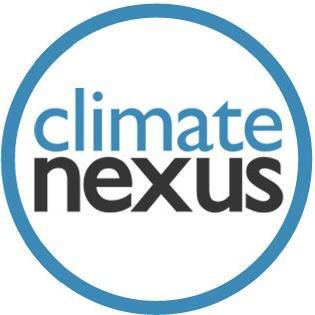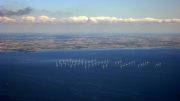Electric car (EV) sales are predicted to surge in 2021 as China and the European Union tighten emissions standards and calls for all-electric auto markets emerge in the U.S. In September 2020, California announced plans to phase out the sale of gas-powered vehicles by 2035, and shortly after New Jersey officials and New York lawmakers made the same recommendation. President-elect Biden has also committed to electrifying transportation as part of a broader plan to support clean energy and tackle climate change.
Analysts expect global EV sales to surpass gas-engine sales by 2030, and by 2022 there will be over 500 electric models available globally. Though the global auto market has been hit hard from the pandemic, EV sales climbed in the EU and China. Sales in the U.S. are concentrated in major cities and in California, where EVs achieved 7 percent of new vehicle sales in 2019.
As EV sales continue to rise and as more states develop targets to phase out gas-powered cars and trucks, so too will questions about how EVs interact with the U.S. electricity grid.
With proper planning, the power grid can handle the millions of EVs that will connect with the grid for charging, according to the U.S. Department of Energy. Numerous studies and pilot projects have also confirmed that EVs can be integrated into the power grids in ways that benefit communities, vehicle owners, and utilities. Regulators and utilities understand what’s at stake, and are transforming U.S. power grids to use electric cars and trucks as a two-way power resource. In tandem, the grid must transition to carbon-free electricity in order to reduce emissions on the timeline experts say is required. The notion that the grid cannot handle electric cars and trucks, meanwhile, is largely driven by the oil and gas industry.
Today, the impact of electric cars and trucks on electricity grids is small and there is enough excess capacity to handle a rapid growth of plug-in vehicles.
- The U.S. power grid has plenty of excess capacity as increasing urbanization and building efficiency have driven down electricity needs. Nationwide electricity demand remained flat for the past 10 years while capacity grew an average of 12 gigawatts each year.
- Fewer than 0.2 percent of the electric cars sold in California – the leading state for electric vehicle adoption – have required any upgrades of the state electricity grid.
- Norway, where EVs could reach 90 percent of new car sales in 2021, has accommodated hundreds of thousands EVs with little to no adverse grid impacts. Instead, EV sales are driving investment in grid upgrades because they represent such a large market growth opportunity for power providers, especially in countries that have seen electricity demand fall due to energy efficiency.
Electric cars and trucks can be integrated into power grids in ways that benefit communities, vehicle owners, and utility shareholders.
- Based on typical driving patterns, about 90 percent of the 130 million global EVs on the road by 2030 will be parked at any given time. EVs can act as a rolling battery during this downtime, storing excess energy generated during off-peak periods like overnight or in the middle of the day, and returning it when demand spikes.
- These sort of grid services will lower electricity bills by as much as 13 percent, help grid operators handle unexpected drops in electricity generation, and pay EV owners for turning their vehicles into a distributed energy resource.
- Smart EVs paired with a smart grid could help extend EVs battery life, and working together can deliver $1 billion in value to California’s grid alone, by reducing peak demand, lowering operational costs, and providing “ancillary services” that help stabilize the power system by balancing supply and demand on short notice.
Regulators and utilities understand what’s at stake, and are transforming U.S. power grids to use electric cars and trucks as a two-way power resource. At the same time, the grid must transition to carbon-free electricity.
- The CEO of Edison International, the second largest electric utility in California, said the goal to phase out new sales of gas-powered cars by 2035 is “doable” and “gives society time to deploy infrastructure for chargers and get consumers comfortable.”
- Electrifying all U.S. cars and non-commercial trucks would add 774 terawatts hours of revenue-generating electricity demand, almost equal to the demand of the entire U.S. industrial sector.
- Utility companies are seeking to get ahead of the expected growth of the electric car and truck market, and have supported federal policy designed to help electric transportation and have sought regulatory approval to invest millions in upgrading infrastructure.
- Public utility commissions across the country have approved roughly $2.6 billion in transportation electrification investments to prepare the grid for more plug-in vehicles, including for more than 49,000 Level 2 charging stations and 2,600 fast charging stations in 26 states throughout the country.
- The Department of Homeland Security is helping upgrade the grid to safeguard against cyberattacks and prepare utilities for the growth in renewable energy and electric cars and trucks.
- To rapidly reduce emissions on the timeline experts recommend, it will be essential to transition the grid to carbon-free electricity in tandem with the ramping up of electric cars and trucks. Research from UC Berkeley has shown it is technically feasible for the U.S. to reach 90 percent clean electricity by 2035, dependably and without increasing consumer bills.
The notion that the power grid cannot handle electric cars and trucks is largely driven by the oil and gas industry.
- The extractive industries have waged state-by-state, multimillion-dollar battles to stop utilities from building charging stations across the country, and have opposed electric car and truck legislation in Illinois, California, Iowa, Massachusetts, and elsewhere.
- Oil and gas advocates and conservative think tanks recently took a unified response to Governor Newsom’s call for 100 percent of new car sales in California to be electric. The Western States Petroleum Association, other oil-funded groups like the Heritage Foundation and Manhattan Institute claimed this executive action would strain electricity grids. Former coal lobbyist and EPA Administrator Andrew Wheeler then echoed this argument as part of the agency’s official response to Governor Newsom.
This article is republished from Climate Nexus. Read the original article.





